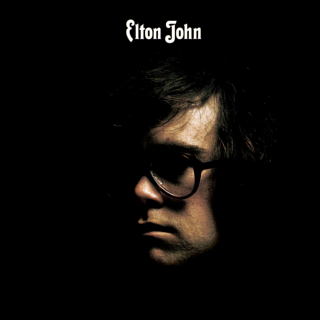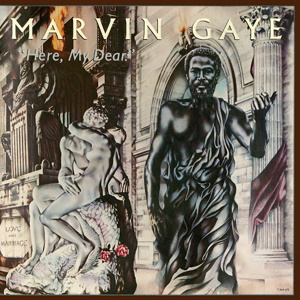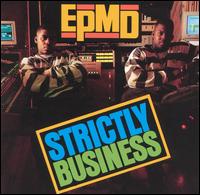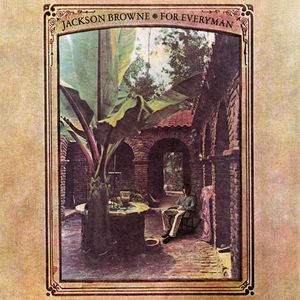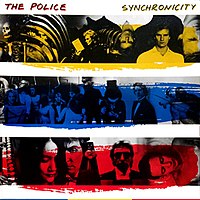 Band:
Band: Hole
Album: Live Through this
Why Rolling Stone gets it right: Kurt Cobain's wife's band's album was released just days before his death and probably received a bit of a sales bump because of it. The album's moderately catchy and brought some of the riot grrl stuff to the mainstream.
Why Rolling Stone gets it wrong: The album is hardly the best of the genre and there are rumors that Cobain wrote much of the record. Courtney Love's voice is annoying, too.
Best song: "Plump" has a good riff.
Worst song: "Gutless" stinks.
Is it awesome?: Nope.
As I referenced in my piece on "How Will The Wolf Survive," the tail end of the list contains a ton of records that are simply placeholders for a small fad or scene of music. There's a Loretta Lynne record and a Merle Haggard record to try and make up for the lack of country. There's some punk. There's "Faith." There are a couple of old school hip hop records.
And here we have the riot grrrl culture that came out of the Pacific Northwest in the early 1990s. The aesthetic of punk ran rampant through riot grrl and Hole -- despite not being a good representative by any means -- is the magazine's nod to that culture.
---
Looking back, riot grrl showed a really nasty underside of punk rock culture. When Bikini Kill, L7, Bratmobile and the like came on the scene, any number of slurs were tossed about within the punk rock community, most of them implying homosexuality or an anti-male feeling. "Man-hater" and "dyke" were popular ones to hurl at the Kathleen Hannahs of the world, solely for their expression of emotion. They were hated all for being the personification of a quote from Bongwater's Ann Magnuson: "Except for Joan of Arc and Anne Frank, the thoughts of teenage girls have rarely been taken seriously."
And because this whole site is about one thing (me), I have to say that I've always been a big fan of riot grrl fashion, though I prefer
its evolved counterparts. There's a real edge to it, something that's been lost in the "let's glorify the old idea of the feminine"
girl power that came after riot grrl.
The fashion mirrors the message, often. As the original fashion sense of riot grrl was loud, dirty and decidedly in your face, the message was similar. Just on "Live Through This," there is little in the way of metaphor or implication. Bikini Kill and Bratmobile were overt in their message ("Suck My Left One" being one of Bikini Kill's first records), just as the band's early style was all baby doll, dyed hair and ugly SuicideGirl chic.
This will always be -- to me, a self-described (though that may be a misnomer, as I'm probably just being pompous about my politics) feminist -- segment of any movement that is incredibly annoying and, quite frankly, incorrect. It doesn't mean that these people are fully wrong in everything, but it means that
A quick diversion: For an grad school assignment, I had to attend the anti-war rally here in D.C. back in the fall. It was pretty big, though not huge. I'm not one for protests, personally. As a free speech absolutist, I like the idea of them, but it's not my scene.
The reason I don't like protests is because protests -- left, right, whatever -- almost always attract the most extreme of any movement. In the case of the religious ones, you find the folks who would like to bomb every abortion provider and the crazy people who believe the U.S. government should shoot anyone speaking Spanish. In the case of leftie protests, you get the people I saw at the anti-war rally.
Whatever you say about the right, they tend to stay on message. You will not see someone arguing for lower taxes at a pro-life rally. You probably won't see someone who wants to democratize Iraq at a pro-life rally.
But at an anti-war rally? Every single subgroup of the left's big tent was there. There were lots (
lots) of socialists. There were a bunch of Sept. 11 conspiracy crackpots who believe the U.S. government caused the attacks. There were a fair amount of free Palestine people. The gay rights folks were there. The environmentalists were there. A man holding a mic hooked to a battery-powered amp preached socialism with the message that Barack Obama and Hillary Clinton wouldn't change
anything from the Bush administration.
I can see the connection with the free Palestine people, however hard that connection is to make. It's not a direct connection, but it's Middle East policy. Fine. But gay rights? The Bush environmental policy? Socialism? What the hell do these things have to do with Iraq? Not much.
Even the people who
were on message were obnoxious and distracting. I saw not one, but two papier mache devils meant to represent, I guess, Bush. I saw scores of SDS kids wearing bandanas as though they were banditos in an old Western. I saw people wearing Bush masks. There were more dreadlocked white guys there than at all the head shops in North America.
This, of course, is the downside of early riot grrl culture. Someone like
Nomy Lamm, for example, is incredibly annoying. She makes annoying, dissonant music and she preaches "fat acceptance."
(Not to get further on my tangent here, but "fat acceptance" is patently ludicrous. Being extremely overweight is not healthy. Hell, being overweight in the first place isn't healthy -- I'm probably 20 pounds overweight and it shows up in the knee problems I've had recently. Eating because of depression is often something that can be treated, but being fat isn't good, sorry,
BBW magazine.)
But, Lamm is correct in the way that she presents riot grrl in this particular quote:
I'd never had feminism presented to me in any way that was interesting at all, like all I knew of feminism was that it was like you can then work in a corporation and get paid the same amount as a man.
This, of course, gets to the central issue that most men have with radical feminism. Radical feminism -- and I'm probably totally wrong here, as I'm coming from a man's perspective -- posits that the entire system needs to be shifted. Often, this is associated with the queercore and androgynous movements, suggesting that gender doesn't need to be binary.
I don't agree with all of those things, but I'm incredibly glad that these people exist. There are too
many religious organizations that subjugate women. These are the people who believe that women are only able to have children and can't speak to their own needs. These people hold great sway still and those of us in the mainstream aren't going to evoke change without some pushing from those on the wing.
Basically, what I'm saying is that I'm a gutter punk at heart. Just not in practice.
---
"Live Through This" has all the unfortunate trappings of this early riot grrl stuff. Lyrically, it's not subtle. "Plump" has the line "They say I'm plump, but I throw up all the time," "Jennifer's Body" has the bridge of "They found pieces of Jennifer's body" and "Asking For It" is, well, all about rape.
The music is mildly catchy, possibly reinforcing the rumor that Kurt Cobain wrote some or all of the record. None of it is particularly exciting, but it's perfectly pleasant soft/loud grunge. Love's voice is grating, but fitting of the music as riot grrl stuff.
---
"Hole" was famous because Courtney Love was married to Kurt Cobain. They're hardly the best band of their ilk, as L7, Bikini Kill and (especially) Sleater-Kinney are the best of this bunch. Sleater-Kinney is a brilliant band. Hole is just OK.









